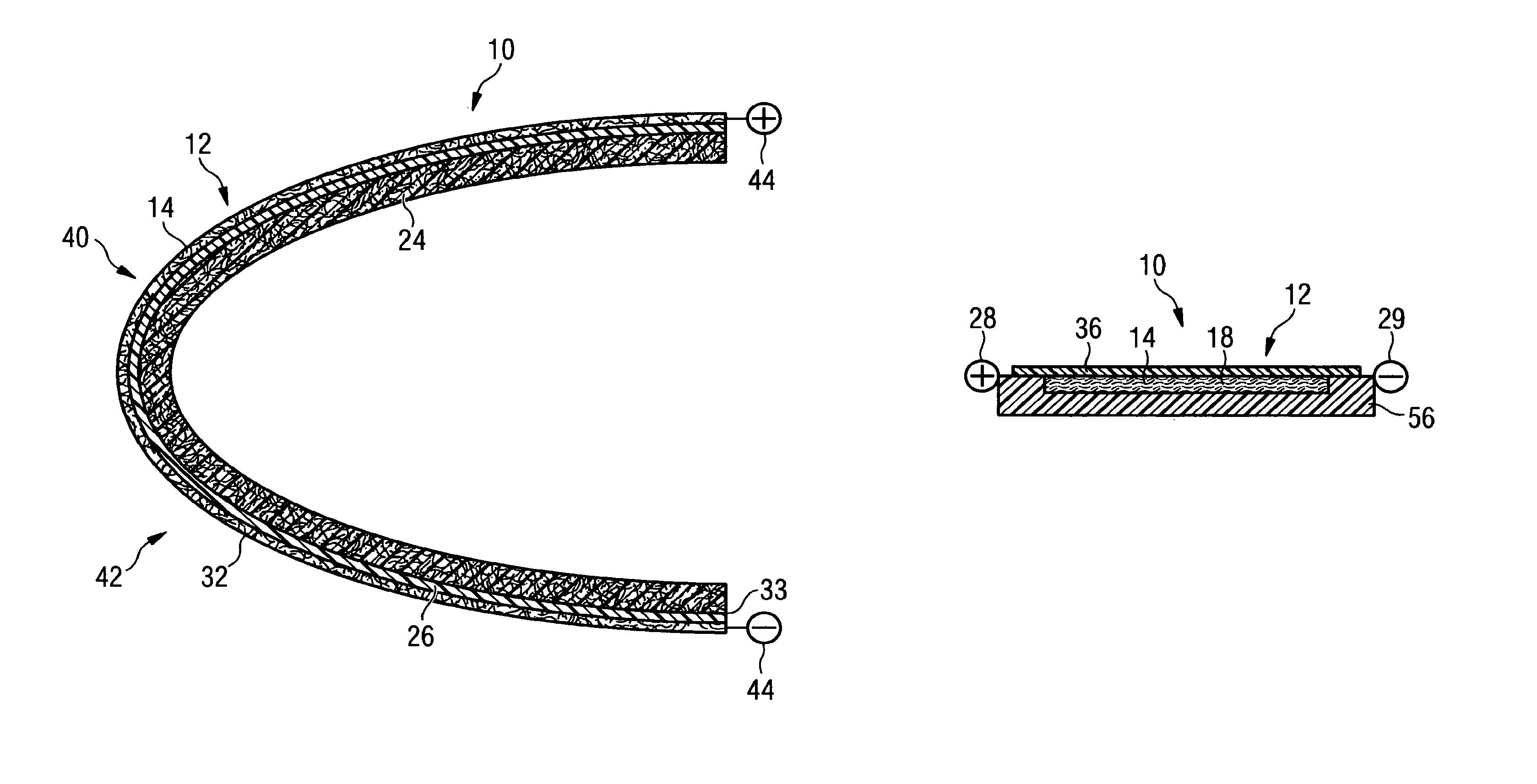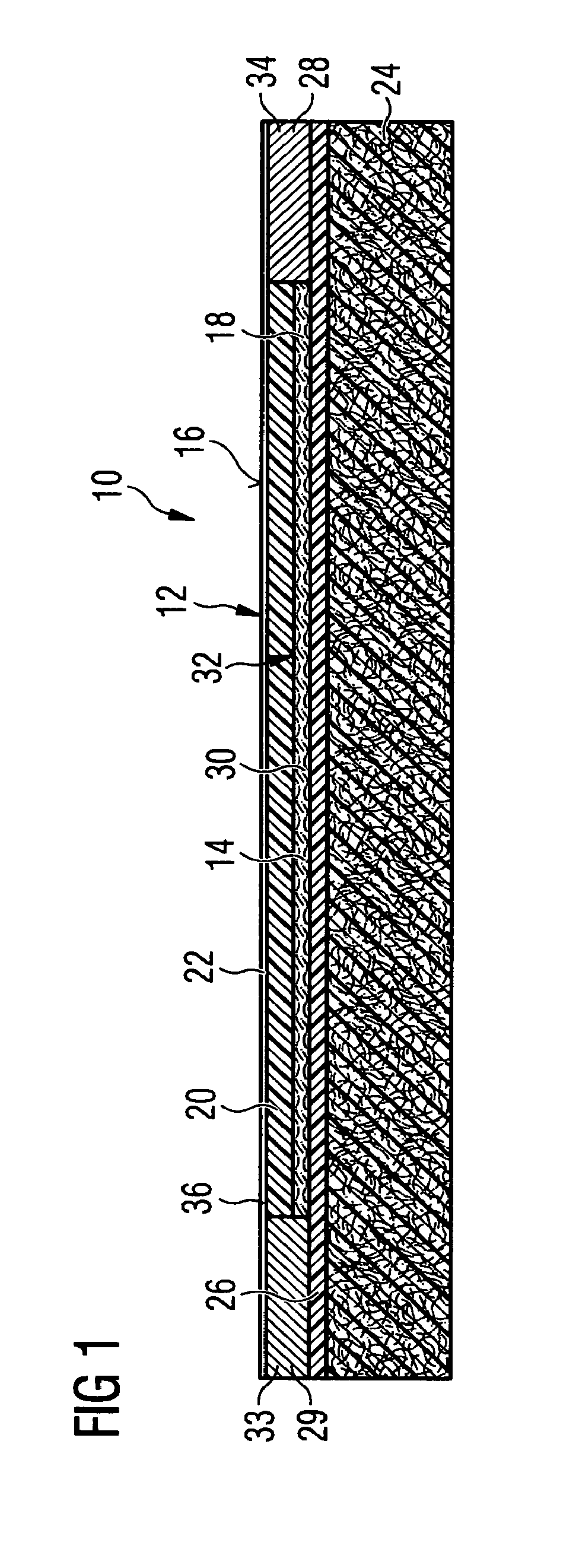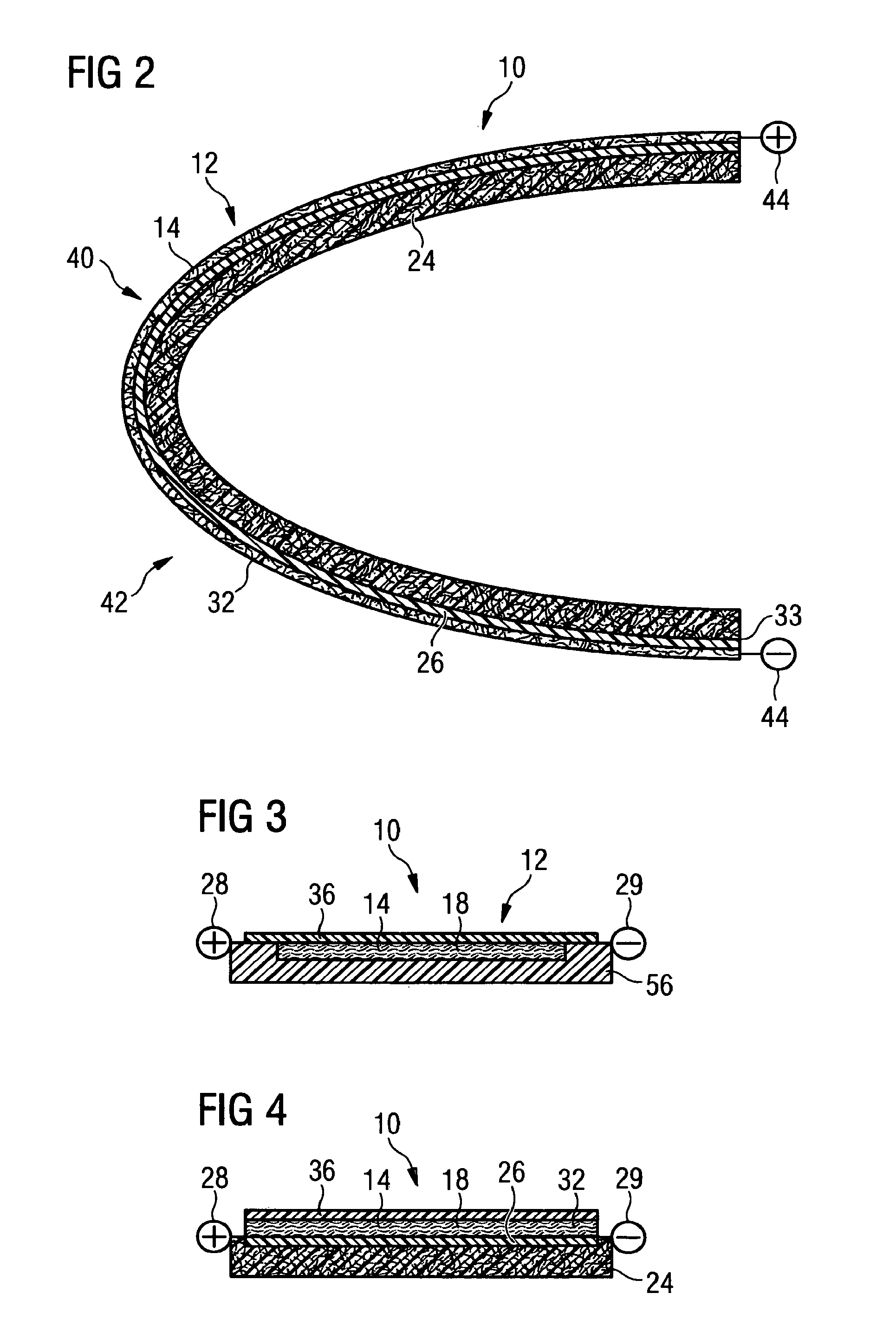Composite structure having an ice protection device, and production method
a technology of ice protection device and composite structure, which is applied in the direction of electrical equipment, aircraft components, electric heating, etc., can solve the problems of stalling and loss of lift force, affecting the air flow affecting the airflow over the surface concerned, so as to achieve the effect of easily embedded in the composite structur
- Summary
- Abstract
- Description
- Claims
- Application Information
AI Technical Summary
Benefits of technology
Problems solved by technology
Method used
Image
Examples
first embodiment
[0057]The electric heating element 14 is a two-dimensional sheet, in order to form a heating layer 18 that is arranged below the outer cover layer 20 of the composite structure. The outer cover layer 20 is formed, in particular, by means of a finish top coat 22. The construction of the composite structure 10 is explained in detail below with reference to the drawing in FIG. 1.
[0058]The composite structure 10, shown in FIG. 1, has a composite material substrate 24 made of a fiber reinforced composite material.
[0059]In particular, the composite material substrate 24 is formed from a carbon fiber reinforced plastic material. The plastic material is, in particular, epoxy resin. Correspondingly the composite material substrate 24 is formed, in particular, from a CFRP material.
[0060]An insulating layer 26, made of an electrically insulating material, is applied on this composite material substrate 24. The insulating layer 26 is formed, in particular, from epoxy resin.
[0061]Between the com...
second embodiment
[0100]In the second embodiment shown in FIG. 3, a carbon felt 32 is embedded as the heating element 14 in a thermoplastic resin, for example PPS or PAA, and covered with the PEEK coating 36 as the finish top coat 22. The carbon felt 32 is, for example, a felt that is available under the tradename SIGRATEX®. The thermoplastic resins for embedding this felt 32 are available on the market, for example, under the tradename FORTRON® or IXEF®. The felt 32 is generally embedded in a synthetic plastic material 56.
[0101]In the third embodiment, shown in FIG. 4, a silicone rubber, which vulcanizes into a silicone gel, is provided as the material for the insulating layer 26. One example of said silicone rubber is the material that is available under the brand name SIL-Gel®. Hence, the composite structure 10, according to the third embodiment shown in FIG. 4, is constructed from the bottom to the top as follows: the composite material substrate 24; the insulating layer 26 using the SIL-Gel, the...
fourth embodiment
[0102]In the composite structure 10 shown in FIG. 5, a latent heat storage device 46 is also provided additionally below the heating layer 18 with the electric heating element 14. The latent heat storage device 46 is designed as a latent heat storage panel 48 that can store the latent heat by using an embedded material that has a phase transition at the temperature of interest.
[0103]Such a latent heat storage panel 48 is formed, for example, from a composite material made of a material, which exhibits a phase transition occurring at the temperatures under discussion herein, and carbon. Such a latent heat storage panel 48 is available on the market, for example, under the brand name ECOPHIT®.
PUM
| Property | Measurement | Unit |
|---|---|---|
| thickness | aaaaa | aaaaa |
| thickness | aaaaa | aaaaa |
| width | aaaaa | aaaaa |
Abstract
Description
Claims
Application Information
 Login to View More
Login to View More - R&D
- Intellectual Property
- Life Sciences
- Materials
- Tech Scout
- Unparalleled Data Quality
- Higher Quality Content
- 60% Fewer Hallucinations
Browse by: Latest US Patents, China's latest patents, Technical Efficacy Thesaurus, Application Domain, Technology Topic, Popular Technical Reports.
© 2025 PatSnap. All rights reserved.Legal|Privacy policy|Modern Slavery Act Transparency Statement|Sitemap|About US| Contact US: help@patsnap.com



